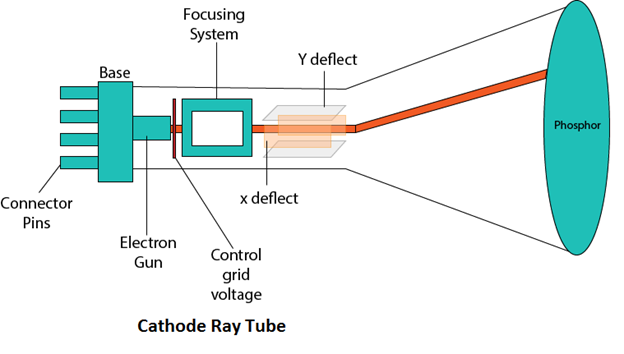Computer Graphics
Graphic Systems
Input-Output Devices
Scan Conversion a line
Scan Conversion Circle
Scan Converting Ellipse
Filled Area Primitives
2D Transformations
2D-Viewing
Clipping Techniques
Pointing & Positioning
3D Computer Graphics
Hidden Surfaces
Projection
Programs
Cathode Ray Tube (CRT)
CRT stands for Cathode Ray Tube. CRT is a technology used in traditional computer monitors and televisions. The image on CRT display is created by firing electrons from the back of the tube of phosphorus located towards the front of the screen.
Once the electron heats the phosphorus, they light up, and they are projected on a screen. The color you view on the screen is produced by a blend of red, blue and green light.

Components of CRT:
Main Components of CRT are:
Polymorphism in Java | Dynamic Method Dispatch
1. Electron Gun: Electron gun consisting of a series of elements, primarily a heating filament (heater) and a cathode. The electron gun creates a source of electrons which are focused into a narrow beam directed at the face of the CRT.
2. Control Electrode: It is used to turn the electron beam on and off.
3. Focusing system: It is used to create a clear picture by focusing the electrons into a narrow beam.
4. Deflection Yoke: It is used to control the direction of the electron beam. It creates an electric or magnetic field which will bend the electron beam as it passes through the area. In a conventional CRT, the yoke is linked to a sweep or scan generator. The deflection yoke which is connected to the sweep generator creates a fluctuating electric or magnetic potential.
5. Phosphorus-coated screen: The inside front surface of every CRT is coated with phosphors. Phosphors glow when a high-energy electron beam hits them. Phosphorescence is the term used to characterize the light given off by a phosphor after it has been exposed to an electron beam.


